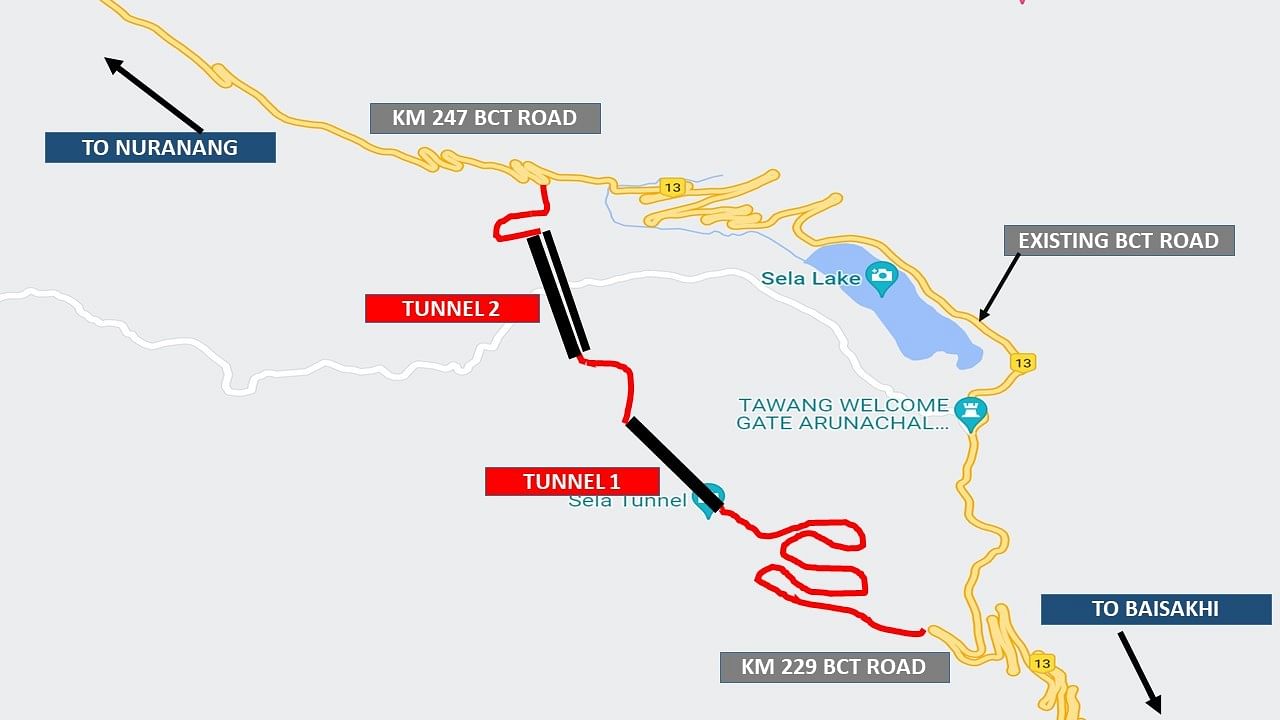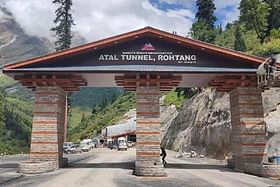Going full-steam ahead on infrastructure, the government is currently working on 144 tunnel projects across national highways (NH) in the country, Minister for Road Transport and Highways Nitin Gadkari said on Wednesday (17 May).
“144 tunnel projects spanning 357 km across national highways (NH), amounting to Rs 2-lakh crore, are currently underway in the country,” Minister Gadkari said at a conference organised by industry body FICCI on emerging trends and opportunities in tunnel construction.
The Minister pointed out that 30 tunnels, covering 45 km, are in operation, while another 60 tunnels, adding up to around 120 km, are under implementation and set to be completed within the next one to two years. Besides, 54 tunnels are under the Detailed Project Report (DPR) stage.
Road Tunnels
A road tunnel is an alternative vehicular transportation system to cross a water body or traverse through physical barriers such as mountains, existing roadways, railways; or to satisfy environmental or ecological requirements.
There are three main shapes of highway tunnels — circular, rectangular, and horseshoe or curvilinear. The shape of the tunnel is largely dependent on the method used to construct the tunnel and on the ground conditions.
Conventional techniques such as the drill and blast method (DBM) continue to play a dominant role in the execution of tunnel construction projects. Techniques such as tunnelling boring machines (TBMs) and the New Austrian Tunnelling Method (NATM) are also being increasingly adopted. Lately, contractors are also exploring modern techniques such as sequential excavation and ground freezing.
Modern tunnels are also being equipped with advanced features including fully transverse ventilation system, uninterrupted power supply (UPS), tunnel emergency lighting, CCTV monitoring, variable message signs (VMS), traffic logging equipment, overheight vehicle detection and tunnel radio system.
In Pipeline
Tunnel construction activity in India has seen significant growth in the past few years owing to development across key infrastructure sectors, including urban rail, roads and highways, hydropower and water.
Some of the landmark tunneling project which have been completed in recent years include:
- Atal Tunnel: Certified as the world’s longest tunnel at an altitude above 10,000 feet, the 9.02-km-long Atal tunnel runs under the ‘Rohtang Pass’ on the Manali-Leh Highway. It has reduced the road distance by 46 Kms between Manali and Leh and the time by about 4 to 5 hours, providing all-weather connectivity on the Manali – Leh axis.
- Chamba Tunnel: Built by BRO, the 440-metre-long tunnel below the busy Chamba town on Rishikesh-Dharasu road Highway (NH 94) has further eased the movement of pilgrims on Char Dham yatra.
- Nechiphu Tunnel: The 500-metre-long tunnel, at an altitude of 5,700 feet, is located on the Balipara-Charduar-Tawang (BCT) Road in West Kameng district of Arunachal Pradesh and has been made to accommodate two-way traffic.
- Chenani- Nashri Tunnel: This 9-km tunnel is the longest such state of art tunnel in the country, connecting Udhampur to Ramban in Jammu. Constructed at a cost of Rs 2500 crore, it cuts down 31 km of travel distance and reduces the travel time between the two points by about two hours.
- Rewa-Sidhi Tunnel: The six-lane, 2.28 km long, tunnel situated on NH 75 was inaugurated in Dec 2022 and has reduced distance between Rewa and Sidhi districts in Madhya Pradesh by 7 kilometers, besides reducing commute time by at least an hour.
There is currently a pipeline of 144 tunnel projects on national highways, in various stages of development — either completed, under implementation, or under planning stage.
Apart from this, the Ministry of Road Transport and Highways (MoRTH) is expected to build 350 more tunnels at a cost of Rs 1 lakh crore going ahead.
“Gradually, we have to build at least 350 tunnels at an additional cost of ₹1 lakh crore and these numbers are separate from the tunnels built by railways or hydropower. They have different tunnels,” Gadkari said in his address at an event organised by industry body ASSOCHAM on Thursday (20 May).
Strategic Significance
While many a tunnel under pipeline are being built to improve road connectivity, a large number of them have been planned from a strategic point of view and will not only come as a boost for the security forces, but will also ease travel for civilians.
Most of these strategic tunnels are coming up in Jammu and Kashmir and Arunachal Pradesh – 19 tunnels are being constructed in J&K at a cost of Rs 25,000 crore.
The National Highways and Infrastructure Development Corporation (NHIDCL), a unit of the Road Transport Ministry, is implementing six such tunnel projects, worth Rs 18,539 crore, The Print reported.
Four of the six tunnels are coming up on NH 244, connecting Jammu to Anantnag. They are the Khellani tunnel, the KM 83 tunnel, the 8 km Sudhmahadev-Dranga tunnel and the 10.3 km Singhpora-Vailoo tunnel. Once the four tunnels are ready, travel time between Jammu and Anantnag will reduce from the current 11-12 hours to 6 hours.
The remaining two tunnels on NH-1 — the strategically crucial Zojila and Z-Morh — will provide all-weather road connectivity between Srinagar and Kargil.
The Zojila tunnel holds strategic significance as Zojila Pass is situated at an altitude of 11,578 feet on the Srinagar-Kargil-Leh National highway and remains closed during winters due to heavy snowfall, cutting off Ladakh region from Kashmir.

The 13.14 km-long tunnel, constructed by the Hyderabad-based Megha Engineering and Infrastructures Ltd (MEIL), has a horseshoe shape and passes under the mighty Zojila, connecting Ganderbal in Kashmir and Drass town in the Kargil district of Ladakh.
At present, 28 per cent work of the Zojila Tunnel has been completed and is expected to be opened by 2026.
Similarly, the strategically-significant Sela Tunnel project in in West Kameng district of Arunachal Pradesh, upon completion, will boost all-weather connectivity to the Line of Actual Control with China.
The project, being executed by the Border Roads Organisation (BRO), includes two tunnels and a link road will provide an alternate axis to the Sela pass, which is at 13,700 feet.

Laying the project’s foundation stone in February 2019, the government had highlighted its three benefits: “All weather connectivity to Tawang and forward areas”; reduction in “more than one hour of travel time from Tezpur to Tawang” and travellers avoiding “dangerous snow-covered Sela top at a height of 13,700 feet”.
The project is close to completion and is expected to be opened by June 2023.


